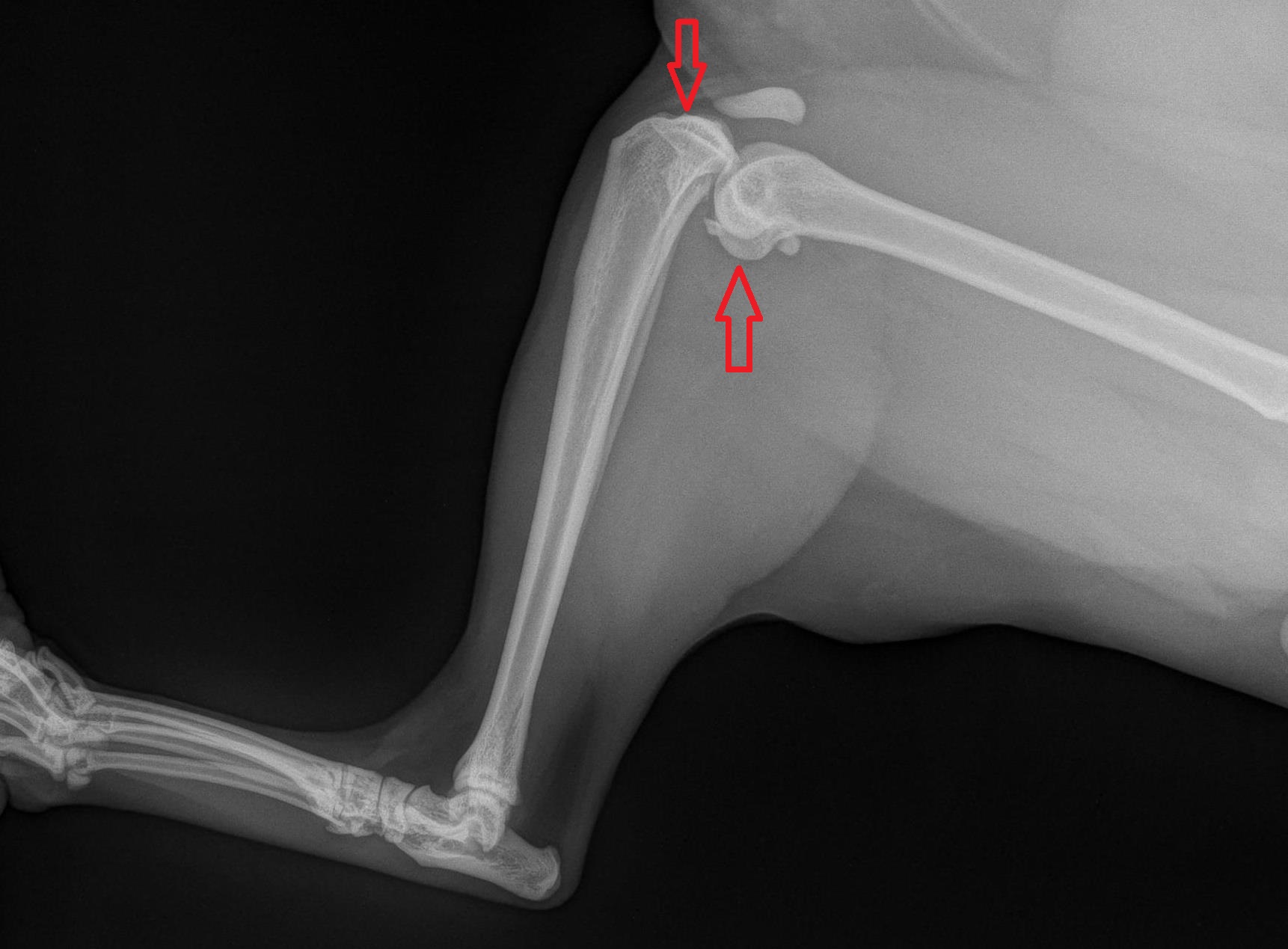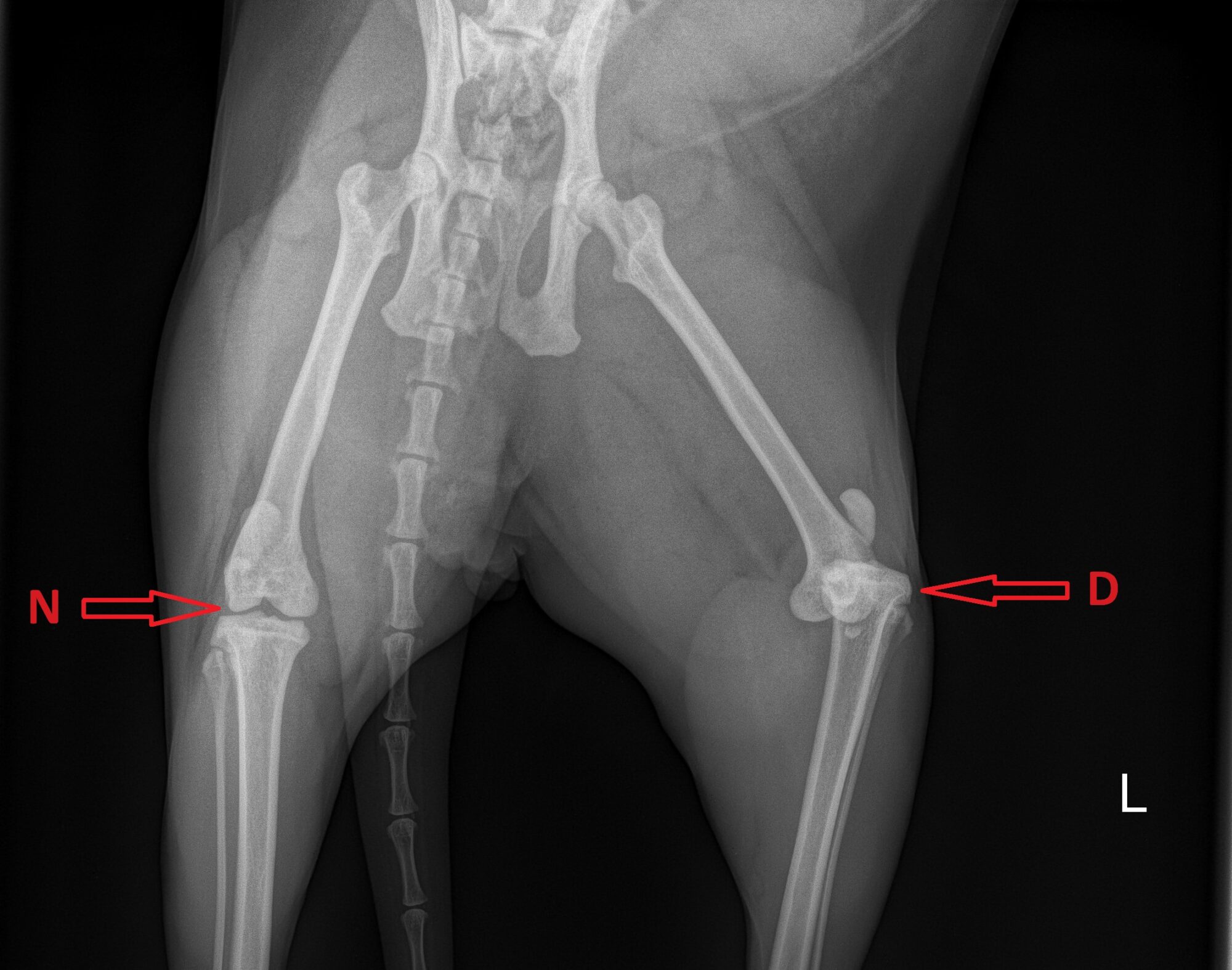Dr. Phil Zeltzman’s Blog
How Toast recovered after deranged knee surgery

Toast, a 4-year-old kitty, was sleeping on the couch when he was suddenly woken up by a porcelain vase that fell and broke into a million pieces. Spooked, he jumped from the couch and hid in another room.

Later that evening, the owner found his poor kitty crying out in pain and unable to use the left back leg.
The next day, he took Toast to his family vet. An exam revealed severe pain in the left knee. X-rays under sedation showed pretty drastic findings.
After reviewing the X-rays, I realized that the knee was completely dislocated (luxated). This is called a “deranged knee.”

I suspected that Toast’s leg got caught during the escape from the couch and the evil vase. While Toast was running for his life, he pulled on the leg, and that presumably caused the damage.

What’s a deranged knee?
Toast’s owner asked what this condition with a weird name was about. I explained that there are four ligaments in the knee: two inside the knee (anterior and posterior cruciate ligaments) and two outside the knee (collateral ligaments). When more than one ligament is torn, the knee is so severely affected, that the condition is called a deranged knee.
Most of the time, both cruciate ligaments and one collateral are torn. Occasionally, with very violent trauma, all four ligaments are torn.
How is a deranged knee treated?
A deranged knee is so unstable (wobbly) that the only hope for a good recovery is surgery. The goal is to make the knee more stable. Post-op care involves a combination of strict rest, pain medications and physical therapy.
During surgery, I confirmed that Toast had 3 torn ligaments (one collateral and both cruciate ligaments). They were repaired with heavy nylon sutures to mimic or imitate the original ligaments.
Toast recovered smoothly from anesthesia and went home the day after surgery.
Recovering from a deranged knee
After 2 weeks of strict confinement and physical therapy, Toast had his stitches removed. At that point he was “toe-touching,” which means that he was starting to put gentle pressure on the foot. After another 6 weeks of continued rest and physical therapy, he had another follow-up exam: he was using the leg very well.
It was time to progressively increase his activity level. We designed a program to help him rebuild muscle and regain flexibility in the surgery knee. By using toys and food, Toast’s owner managed to convince him to follow him around.
Long-term outcome of a deranged knee
Although patients can do well after surgery to repair a deranged knee, they will get arthritis.
We managed Toast’s arthritis by maintaining a healthy weight, and giving joint supplements (aka arthritis supplements) such as glucosamine and fish oil (omega 3 fatty acids) – for life.
In the end, Toast’s owner was happy with the outcome, and promised not to break fragile objects anymore!
If you would like to learn how we can help your pet with safe surgery and anesthesia, please contact us through www.DrPhilZeltzman.com
Never miss a blog by subscribing here: www.DrPhilZeltzman.com/blog
Phil Zeltzman, DVM, DACVS, CVJ, Fear Free Certified
Pete Baia, DVM, MS, DACVS

Dr. Phil Zeltzman is a traveling veterinary surgeon in Pennsylvania & New Jersey. An award-winning author, he loves to share his adventures in practice along with information about vet medicine and surgery that can really help your pets. Dr. Zeltzman specializes in orthopedic, neurologic, cancer, and soft tissue surgeries for dogs, cats, and small exotics. By working with local family vets, he offers the best surgical care, safest anesthesia, and utmost pain management to all his patients. Sign up to get an email when he updates his blog, and follow him on Facebook, too!

